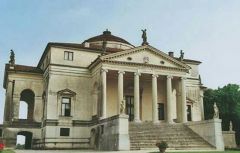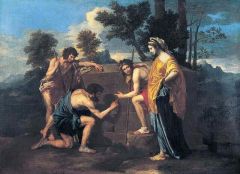![]()
![]()
![]()
Use LEFT and RIGHT arrow keys to navigate between flashcards;
Use UP and DOWN arrow keys to flip the card;
H to show hint;
A reads text to speech;
13 Cards in this Set
- Front
- Back
- 3rd side (hint)
|
Different Styles
|
• Period Style - refers to the characteristic artist manner of a specific era or span of years, usually within a distinct culture, such as 'Archaic Greek' or 'High Renaissance'.
• Regional Style - term used to describe variations in style tied to geography. Like an objects date, or place of orgin, can significantly determine it's character. • Personal Style - the distinctive manner of individual artists or architects, often decisively explains stylistic discrepancies among monuments of the sometime and place. |
|
|
|
Art Movement
|
-Art Movements are the collective titles that are given to artworks which share the same artistic ideals, style, technical approach or timeframe.
-Art Movements are simply a historical convenience for grouping together artists of a certain period or style so that they may be understood within a specific context. |
|
|
|
Formal Analysis
|
Formal analysis is a specific type of visual description.
|
|
|
|
Iconography
|
literally the 'Writing of Images'; refers to both content, or the subject of an artwork, and to the study of the content of the art.
|
|
|
|
Rococo
|
is a style of art that appeared in France around 1700. Likely from the French word 'recallie', which literally means 'pebble', it referred to the small stones and shells used to decorate grotto interiors.
Characteristics of it are... organic shapes, dainty colors, glowing pastels and soft light, elegant figures that move gracefully, exquisitely, wrought furniture, enchanting small sculptures, ornamented mirror frames, ceramic and silvers, paintings, and decorative tapestries |
|
|
|
French Royal Academy
|
founded 1816 by Louis XIV
"a virtual monopoly of teaching exhibition"-Oxford dictionary allowed free learning (like a scholarship) to keep the arts going. |
|
|
|
Enlightenment
|
Era from 1650's to 1780's. The Western philosophy based on empirical evidence that dominated the 18th century. The enlightenment was a new way of thinking critically about the world and about humankind, independently of religion, myth, or tradition.
|
|
|
|
Voltaire
|
one of France's greatest Enlightenment writers.
|
|
|
|
Jean-Jacques Rousseau
|
A philosopher. His first philosophical work, A Discourse on the Arts and Sciences, discussed how science and arts had caused the corruption of virtue and morality.
|
|
|
|
Grand Manner
|
a style considered appropriate for noble and stately matters.
|
|
|
|
Andrea Palladio
|
an influential Classical Italian architect in the 1500s.
|

|
|
|
Cabinet of Curiosities
|
museum in Rome
|
|
|
|
Rubenistes vs Poussinistes
|
☆ line vs color
The Poussinistes thought that drawing and the use of lines were more important than color because it appeals to the mind the most. The Rubenistes believed that color was the most important factor in paintings over line because it is more true to nature. |

|

